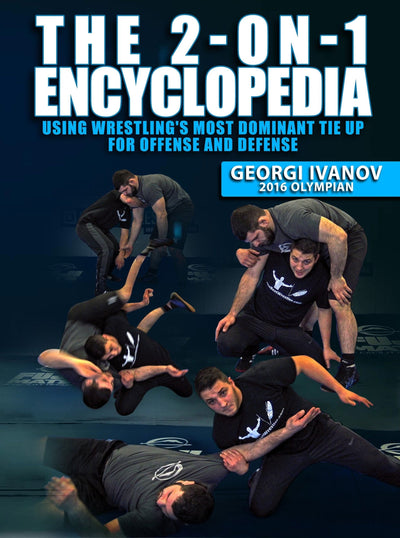The Legendary Shifflet with Sean Russell
You absolutely know a move is unique when it is named after someone. The move that Sean Russell calls the “shifflet” is named after Two-Time All-American Tom Shifflet. Shifflet created this move during his time wrestling for Edinboro in which he dominated people with. Russell is a former wrestler from Edinboro University, and has been able to essentially learn this technique directly from the source.
Tom Shifflet is referred to as one of the all time greats at Edinboro. During his college wrestling career, he helped Edinboro place 11th in national rankings. Finishing with a 31-5 record in 1994-95, Shifflet was named the EWL Wrestler of the year. He was so influential during his college career, he coined his own move!
In this video, Sean Russell technically breaks down the shifflet from the front headlock and shows why it is so effective. Check it out below!
This move can be done in other situations, however Sean is showing a variation from the front headlock position. Specifically, this move is useful when you have your opponent in a front headlock and he goes to grab your arm. Wrestling is all about taking advantage of reactions, and while being able to secure a front headlock is important, it is also important to know how to counter your opponents defensive reaction to it.
Want more tips from Sean Russell? Click Learn More!
To begin the technique, Sean gets his opponent in a front headlock and his opponent reacts by trying to grab and peel off Sean’s arm. At this point you have to decide whether you are going to fight your opponent to keep the headlock or transition to something else. For this move, Sean transitions to an underhook once his partner has solid grips on his elbow.
With his other arm not occupied by the underhook, he brings it across the face of his partner. Sean clarifies that you need to make sure you do not go behind the arm of your partner when you bring your arm across his face. This will not leave you enough space, so you need to go in front of the arm and directly over the face. When you get your arm across, you are going to grab your partner’s wrist which is gripping your elbow.
The next goal is going to be to get your arm out that is currently in the underhook. Chances are you are not just going to be able to pull it out, so you pressure forward into your partner and snap down to create enough space to pull your arm out. Once you get your arm out, it is imperative that you are still holding on to the wrist of your partner. The reason for this is that you are going around to his back, and with control of his wrist he is not going to be able to stop you. Once you accomplish your go behind, you can let go of the wrist and start attacking.
What makes this move work is controlling the wrist. With that kind of control, your partner not only isn’t going anywhere, but he definitely isn’t stopping your go behind. In a split second your opponent goes from thinking he’s got control of your arm with an overhook and a solid elbow grip, to “dang, what just happened”.
Sean Russell was a 2017 All-American with Edinboro, and then joined the University of Minnesota right before the 2018-19 season. Sean dominated the season after joining Minnesota’s team, finishing third at the Big Ten Championships at Williams Arena before a Bloodround finish at the NCAA Championships.
Russell now competes in freestyle wrestling both at local and international levels, and is on the Team USA wrestling team. His long career of college and professional wrestling has given him a unique understanding for the sport, in which he has graced us in the making of his high level instructional.
In Sean’s instructional you can expect to find technique covering all aspects of takedowns. Specifically, inside tie double legs and arm drags, 2 on 1 variations, snap down and knee block go behinds, technical elbow control, finishing leg attacks, and so much more.

This 4 part instructional is densely packed with some of the best technique in the game. No matter what you feel like you need to work on, it is likely covered in this instructional. Take your technique to the next level and check out the instructional here!









